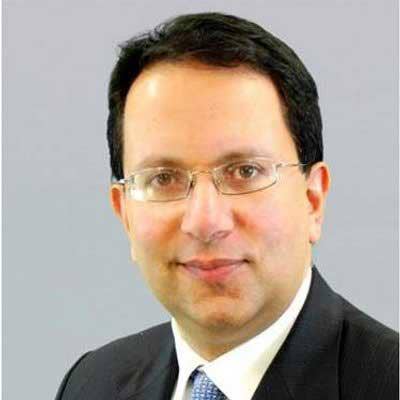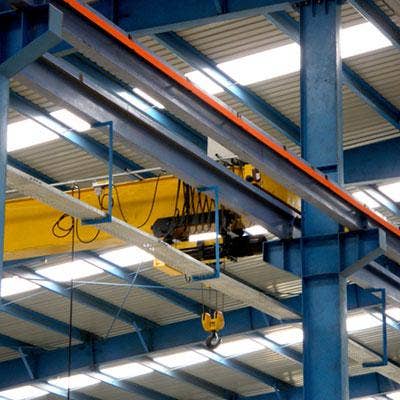GE Digital Channel Executive: 'No Other Company Has Built A Partner Ecosystem This Broad'

GE Digital's All In On Its Channel
CRN spoke with Kevin Ichhpurani, executive vice president of global ecosystem and channels at GE Digital, and corporate officer of GE, to talk about his goals for the company's channel base of resellers, systems integrators and ISVs.
"We're really [focused on] opening up the install base to our partners as opposed to just directing them outside of our install base in the past. That was a big pivot in terms of our messaging – not just from me – but from [GE CEO] John Flannery and [GE Digital CEO] Bill Ruh, and I think it was very well-received," said Ichhpurani.
Following are excerpts from CRN's discussion with Ichhpurani.

GE launched its partner program in 2016. What kind of channel growth has the company seen over the past year? What kind of changes are you making in your program?
We're seeing significant growth in our partner revenue – a several hundred percent increase – and we've really made some significant pivots in our program. We've worked with our partners to take an apps-led strategy, so leading with applications powered by the platform as opposed to leading with the platform. The problem with leading with a platform is that customers don't know what to do with that without a use case, so we're leading with our sales motions, together with our partners APM, ServiceMax and our industry apps, powered by our enablement platform.

How else are you working with partners to address GE Digital's core verticals and markets beyond the company's focus?
We were largely focusing our partners outside our install base before, and we're now actively working with our partners in our core install base top accounts within our eight verticals. We want partners to co-sell with us in our top accounts. And then outside our install base, we want to work almost entirely with partners in our approach to market. So partners have an opportunity in our three markets – category one is within our eight verticals, category two is within our eight verticals but with accounts we haven't penetrated, and category three is outside altogether, where we'll take a complete partner-led approach to market.

How are you transforming your own sales organization to work with partners as they deploy industrial IoT solutions?
I think the challenge is number one, we want our partners to build solutions on top of ours, so to extend our platform and create industry-specific capabilities on top of our platform. So we're putting a lot of investment around enabling our partners because they need to understand how to extend those platforms. There's a lot of technical enablement that we're doing, and sales enablement. We also want to drive a collaborative engagement model with our field. So we're doing internal transformation of our field organization on how do you really sell together in the market and create a ’one plus one equals three' model.

What are partners bringing to the table for industrial IoT solutions? Why not just bring solutions direct to market?
If you think about what we really need from our partners, the first thing is we need our partners to create that point of view for the customer and help build the business case. Number two is we need them to be able to bring their unique industry domain expertise and extend our platform, and thirdly we need them to help deliver end-to-end solutions to customers. We have gaps the customers need filled, so plugging in, whether you're an ISV that plugs in a hole, or an SI that builds solutions in that area.
The fourth piece is enabling a really successful customer go-live. We need to get existing customers live, generating ROI, so that customers will continue to invest.

Are you seeing partners successfully deploying IoT solutions right now?
If you were to break apart the continuum into three phases, phase one is customers' data science projects, doing proof of concept; phase two is customers starting to look at how they can connect their entire plant instead of a couple of devices; and phase three is enterprise transformation. So we see the majority of the opportunity in number one, more starting to brew in number two, and we're seeing a smaller set in phase three. Phase three is mostly in emerging markets where we see companies say they want to go right into enterprise transformation, while mature markets are starting in phase one and going to phase two.

How is GE and its partner base pitching IoT projects to customers?
We have a high success rate with the [proofs of concept], and where we're seeing the most rapid adoption is where we can give a guaranteed outcome. If you look at power, we'll go to a customer and we will help them with a guarantee we can increase their revenue by X and control their maintenance cost. That helps a customer get their arms around the projects.
I think there's a class of customer that really wants that, in certain industries that want to buy in an outcome model, there's classes of customers in other industries where they want to buy more of a software-based approach. We're seeing in power, a very large percentage want outcome, whereas in oil and gas they want more software-based.

What makes GE unique as a partner for systems integrators, solution providers and ISVs?
What makes us so unique is if you were to compare the GE value proposition versus other technology platforms and other software companies, to really deliver on these guaranteed outcomes you have to underwrite that outcome. In order to do that, there's no room for error, so you have to understand the software, the physics. We have all the historical data on servicing those assets, so we can build the richest AI algorithm, and we can marry that with a physics-based model for understanding our equipment and how it performs. So we know more about how to deliver a solution in a manner that's cost-effective and efficient for us. That's something a technology company could never do.

Are you partnering with both IT and operational technology [OT] companies?
When we talked about what we need for partnerships, we need OT partners for certain parts of the value chain, and we need IT partners as well. We're working with Microsoft or SAP – companies are looking to solve that IT-OT convergence as they move forward with their investment. So that's why we're working with partners in both areas; they're both absolutely critical.
If you look at what it takes to drive an engagement, no other company has built an ecosystem this broad. You're doing it all the way from connecting the machines, groups of assets, plant level, then tagging all this and bringing it into a data lake, then there's the ERP system – if you think of a typical SI partner, there's few that have done that full stack, so that's why it takes a whole network of partners.

How are you enabling both IT and OT partners to deploy cybersecurity solutions to customers as they connect their assets?
We're working with partners to provide cyber assessments for our clients, and also deploy our cyber technology. We're seeing a lot of infrastructure companies, whether software or hardware, that have provided security for the IT world for a long time, and others on the IT security side, wanting to address the OT side. They want to provide an end-to-end security scenario. So we see a lot of companies, particularly the SIs I mentioned in the IT world, they're now extending to the OT side, so it's a great opportunity for us.

What's your battle cry for the channel?
Invest ahead of the curve. It's a tremendous market; we're already starting to see customers move from the [proof-of-concept] world beyond. You need to invest now, otherwise you won't be part of that wave. Secondly, take your unique domain expertise and extend our platform, and work with us to build a business case for the client. We look at our channel partner community as a way to get greater scale and footprint in the community.